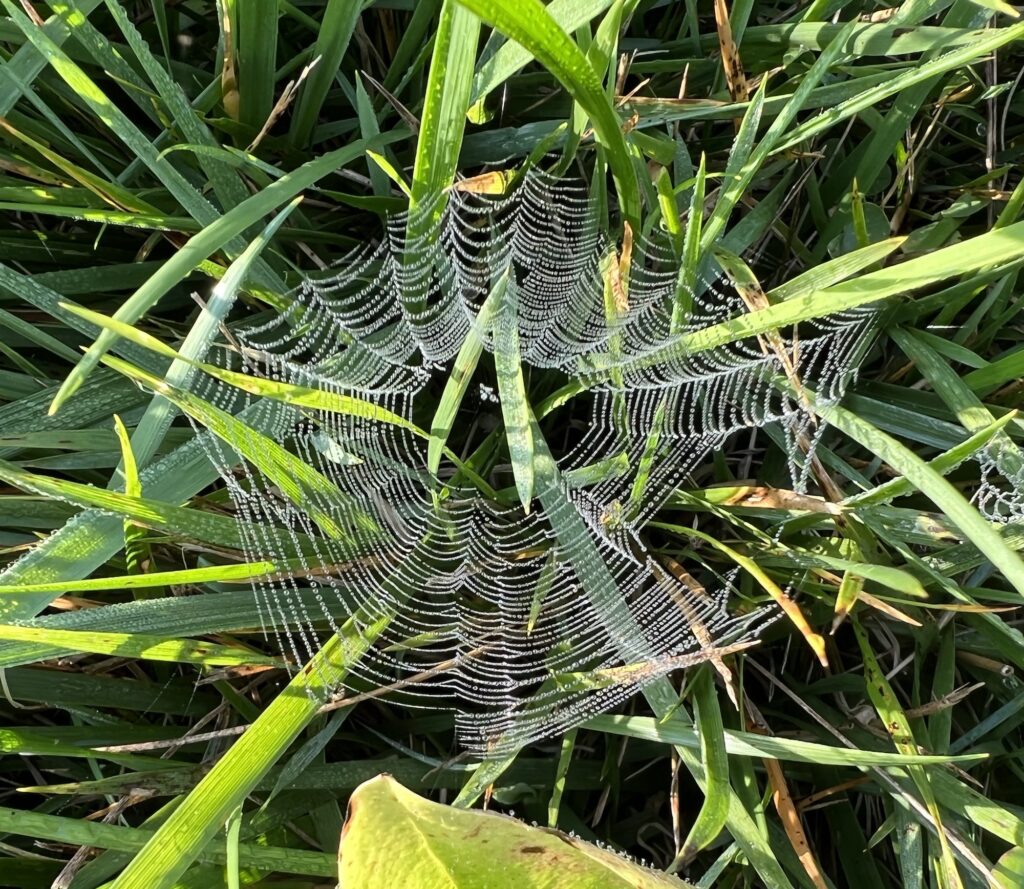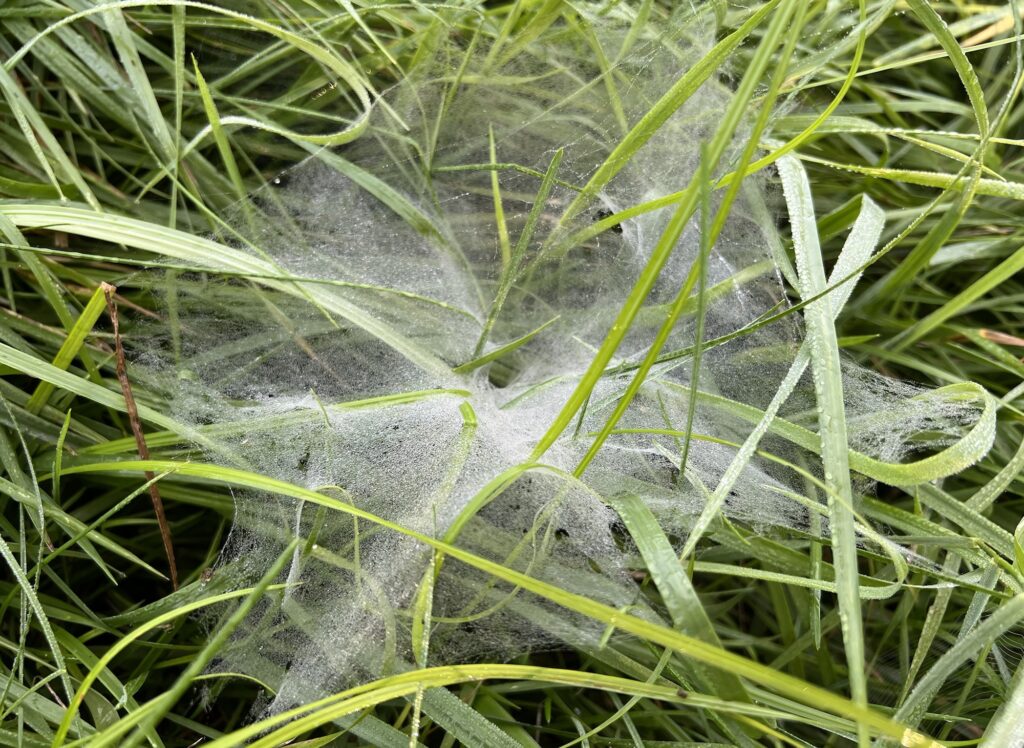
Have you seen the documentary “ReWilding Kernwood“? If you haven’t, it’s worth watching, especially if you love wild spaces and believe in the “leave no trace” philosophy. Here, we’ve been doing a bit of rewilding of our own property, for multiple reasons. It may look unkempt and unappealing to some, but the pollinators and animals that call our land home are big fans.
One of the reasons we’ve let our pastures grow with very infrequent mowing is the cost of fuel. We use a subcompact tractor to mow the fields, and with diesel running over $5/gallon, a single mowing session can become unjustifiably expensive. We apply the money saved by mowing less often to the increased cost of feed (and everything else).
Another reason – and a more compelling one – is that wild animals live in the pastures and can be harmed by the mower. During this time of year, rabbit kits may hide in the grass, hunkering down when they sense danger, and that isn’t an effective strategy when the approaching threat is a tractor with a belly mower; sadly, the results can be disastrous.
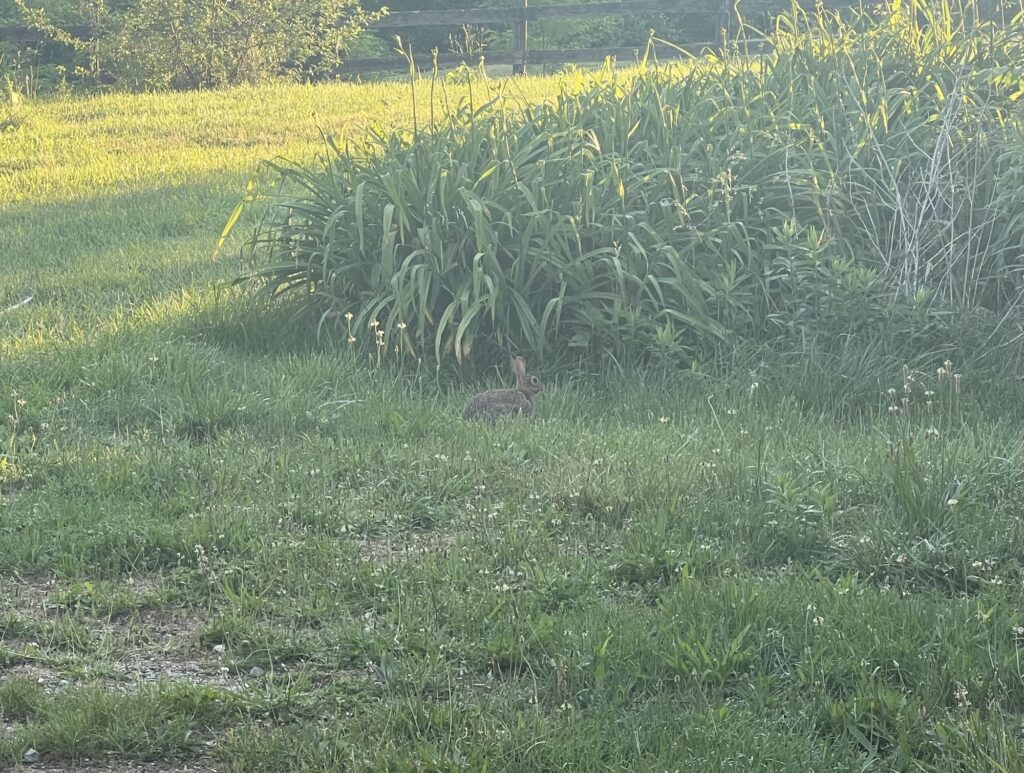
Small birds also make their nests in the grass, and their eggs and chicks would be destroyed by a passing mower. We’ve also found insects like beautiful Praying Mantises in the grass, and many different types of spiders festoon the fields with their woven artwork.
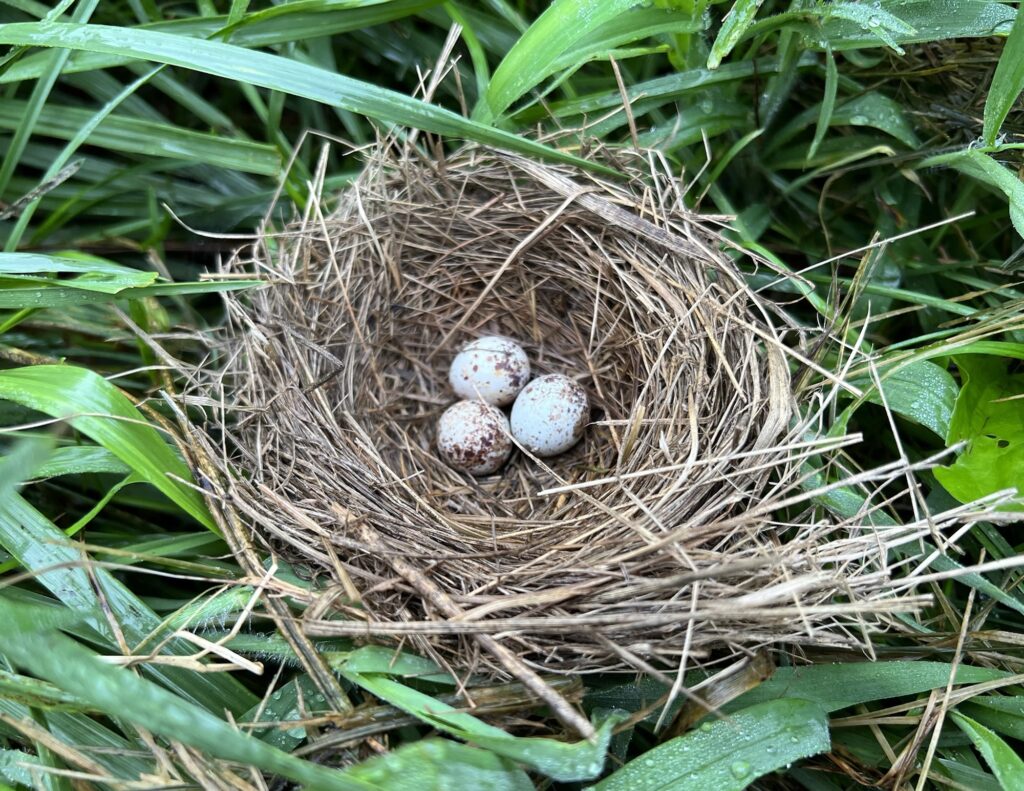
This year, we’ve also discovered numerous seedlings – black walnut, black locust, maple – that would likely have been so small that they would have been nearly invisible when the pastures were mowed. Allowing them to grow larger means that they’re more easily identifiable and can be transplanted (if needed) to more desirable (and safer) locations.
Finally, the pollinators have been attracted to all the wild flowers that have grown in our side pasture, allowing us to view the many types of butterflies, bees, and other winged insects. We’ve seen 2 Monarchs cavorting in the overgrown side pasture, alighting on small flowers.
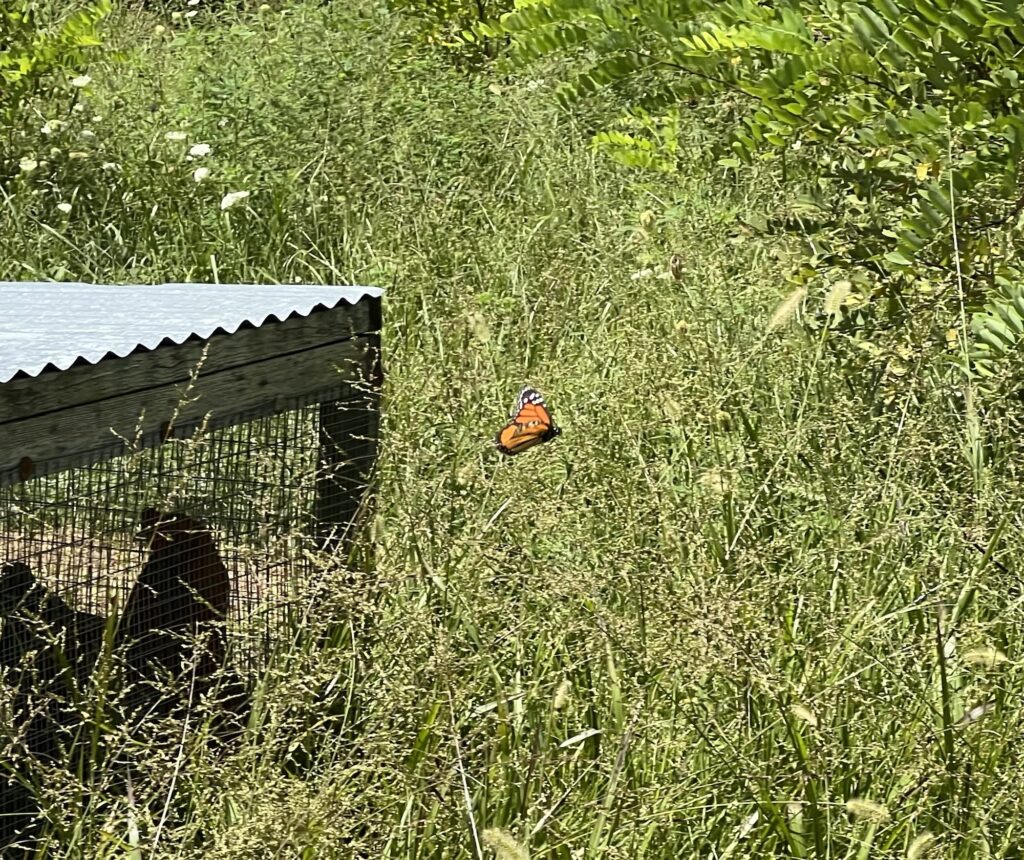
A thistle that was allowed to grow by our patio attracted a huge Swallowtail butterfly – I actually thought it was a bird flapping its wings when I first caught a glimpse of it out of the corner of my eye.
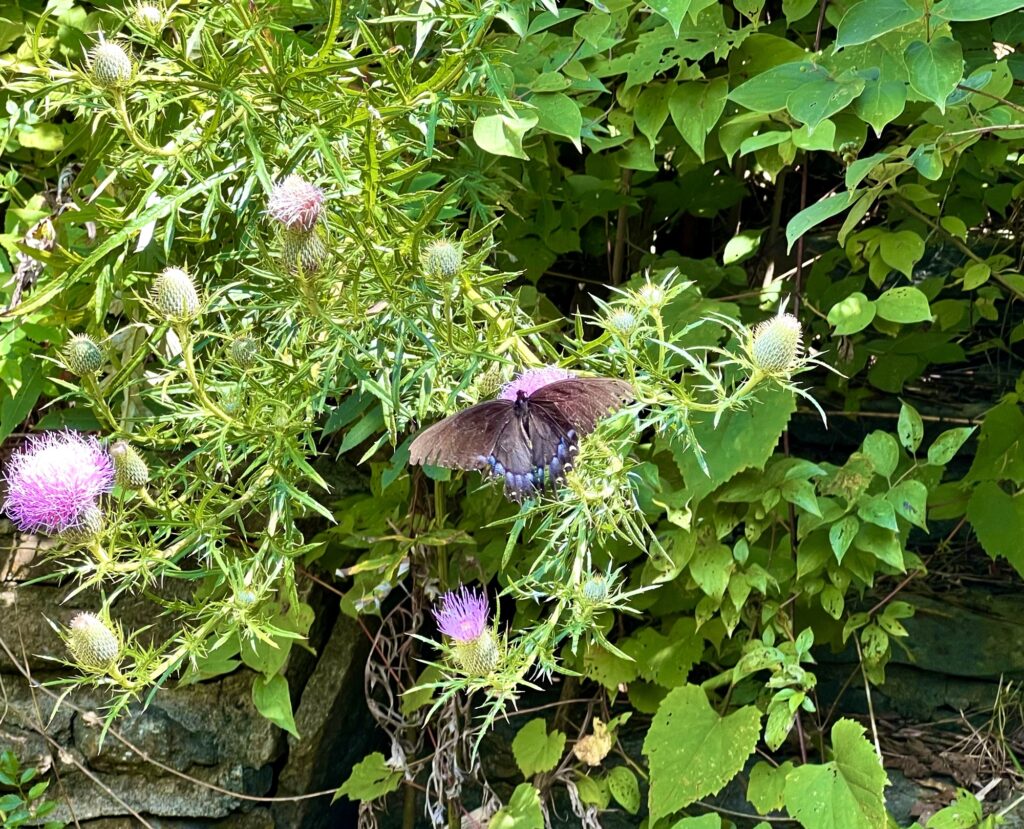
Had we chosen to try to beat our property into submission, mowing obsessively (yes, I’m talking about you, neighbor), burning the grass (we have a neighbor that does this, too, to the detriment of the creatures living there), spraying herbicides, cutting down trees in the pursuit of some “aesthetic”, we wouldn’t have all of the animal and insect visitors. We don’t use any chemicals to manage our pastures, and we plan to keep it that way: not only is it harmful to the environment, but we’d be ingesting those chemicals in our pasture-raised meat.
Black Locust trees have been sprouting up in the side field for years, and, until about two years ago, we’d mowed them down. Now, those trees are large enough to cast their own shade, and their root structures help stabilize the soil on that slope. As an added bonus, the young trees produced flowers this year, incredibly fragrant flowers that we harvested judiciously and made into wine. We’ve also seen a doe and her two fawns hanging around the new locust grove, undoubtedly drawn by the cover provided by those thorny, leafy trees.
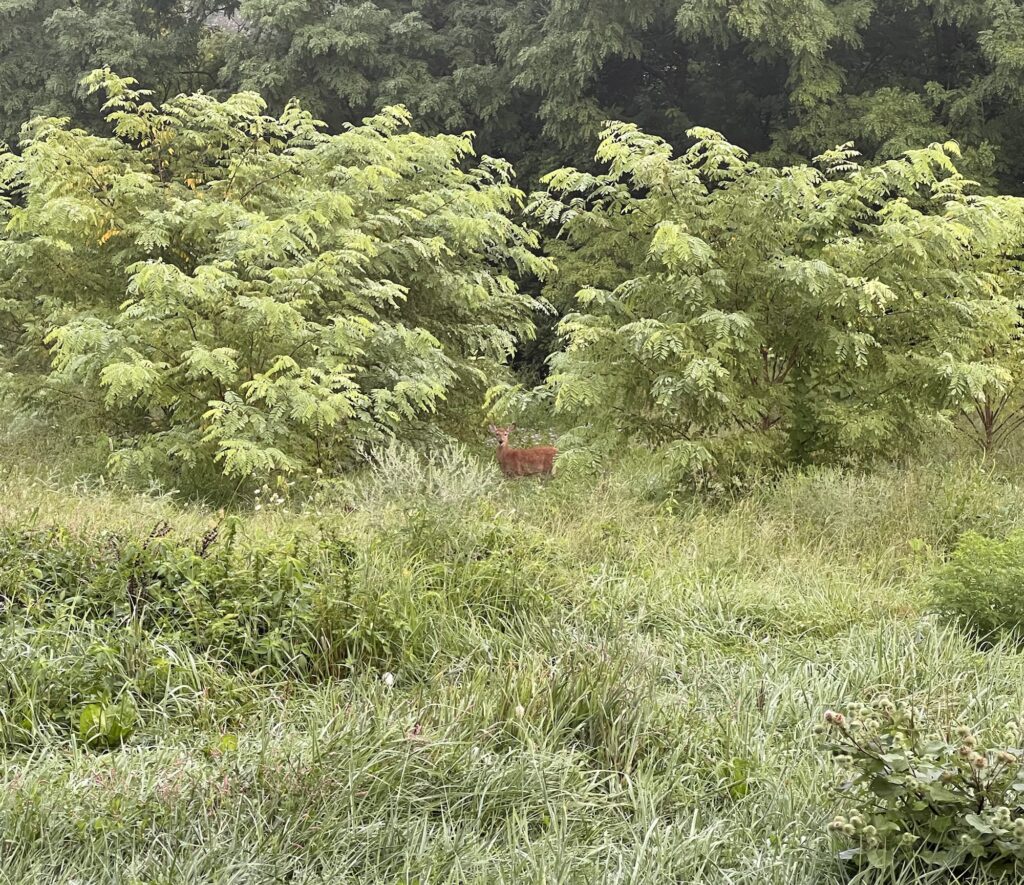
We used to live in a suburban subdivision, and we specifically chose a rural property to avoid the limitations imposed by deed restrictions (called “covenants, conditions, and restrictions” or CC&Rs, where we come from). Here, we choose how often we mow our grass (if at all), what color we want to paint our house or outbuildings, where we park our vehicles or equipment, and what kind of livestock we wish to raise. Back in our development days, our CC&Rs required residents to get permission to paint their home a color that deviated from the “approved” palette. Here, if we wanted to paint our house chartreuse with black and white striped trim, we could do it – but can doesn’t mean should. Other CC&Rs may place limitations on or even prohibit raising certain types of livestock, such as chickens. Can you even imagine??
I previously mentioned how someone we had invited here to capture a swarm of bees on the house had made an offhand remark about our “transitional” property. I was offended, and it was, if nothing else, very poor manners (and the next time we need bees rehomed, we’ll be contacting another apiarist); if the individual was curious about why our property looked the way it did, why didn’t they simply ask what we do here? We would have been glad to explain why we chose to let “weeds” grow, rather than keeping the grounds manicured, had the person actually been interested in understanding, rather than making assumptions.
Little by little, we will rewild this property, allowing trees to grow and cast their shade as well as providing us with their nuts or berries (mulberries have been popping up all over the place over the years, as well as elder bushes), wild flowers to beckon the pollinators, and grass to feed and shelter the wild creatures. Come fall, the pastures will be mowed in preparation for the dormant months, but until then, the wild animals can use and enjoy the greenery as they choose. And if it doesn’t fit some person’s idea of what a rural (or any) property should look like, I’m not going to lose any sleep over it.

